Text
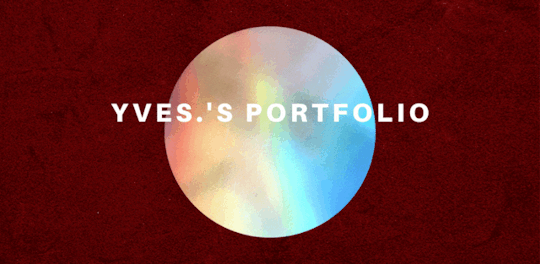
yves.'s ORIGINAL WRITING
Hello! I am yves. (EEVZ-dot), an any-genre author of one short story collection, one novelette, many many short stories, and several novels to come. You can now view all of my published writing—sorted by genre, pricing, and length—right here at this page! Great for anyone who wants a jumping-off point to read or share the yves. canon.
about | works in progress | book | ko-fi | Patreon
see more at https://yvesdotbooks.com/
148 notes
·
View notes
Text
the longer i stay in fandom, the longer i think a huge amount of bad takes and discourse come from an... abundance of identifying with a character
to be clear, i don't think it's bad to identify with a character. far from it! i think that's part of what makes fiction so powerful.
and it's only logical people often attach to a blorbo because they're just like me, for real. a person will see some element of themselves-- their race, their gender, their sexuality, their hobbies, their family life, their specific flavour of neurodivergence-- and something just resonates. it gives them a way to explore and name this important part of themselves, a part they maybe didn't even know existed before it.
and everything is well and good until some split between them and the character shows up
because of course, no character, except an explicit self-insert written by yourself, will ever be a perfect 1:1 for your own experiences. so sooner or later-- maybe in canon, maybe in a fanwork-- your blorbo diverges from your lived experience in a huge way.
I think this is why shipping culture in particular gets so toxic. While it is by no means the only way to indulge with shipping, a significant portion is 'if i was in that character's shoes, i would choose X'. the fight becomes for your own self-identity.
but this gets expanded in other ways. a character who is revealed to be black when the majority of the fandom had just assumed they were white. or revealed to be queer, or maybe the 'wrong' flavour of queer. or fuck, even some more innocuous part of their backstory, one that's nonetheless so meaningful for SOMEONE, but now it feels like the story is saying, fuck you, we're doing something else
i don't know. i just feel acknowledging this perceived-attack-on-identity helps me understand why people react it what seems to be such outsized way to canon and fanworks alike.
at the same time, i think it's a really important thing to check in yourself.
it's nice, to see a character who you identify with. who resonates with for being like you. but it's also nice to acknowledge and appreciate the way characters are not like you at All. how great it is to get insight into this totally different lived experience. and to muse on how wonderful that recognition might be for someone who does have that background.
5K notes
·
View notes
Text
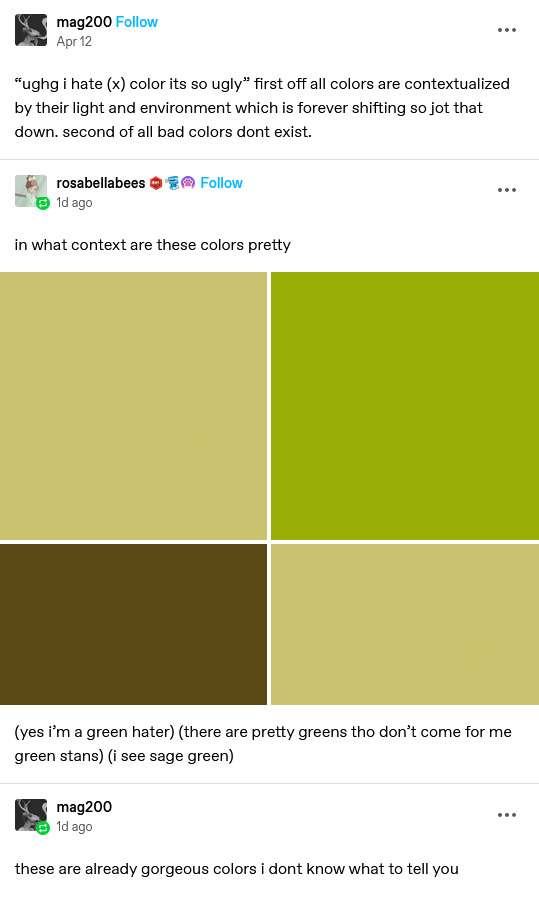

in the hour or so it took me to draw this op turned reblogs off
34K notes
·
View notes
Text


Hey, I'm a queer black enby who desperately needs to get an abortion, but literally can't due to my state's (idaho's) restrictive bullshit abortion laws.
I'm mentally ill and have a part time remote job, but can't hold more hours. my roommate/friend is a trans person with a full time remote job, so fortunately we can stay employed out of state. but with mounting bills and the soaring cost of living we need some extra help with being able to move to oregon.
i'm setting my goal to $500 for gas, motel, and food, but literally any bit helps. thank you guys.
paypal (pls ignore the deadname): paypal.me/jennycarsons
cash app: $aboriginalsoull
0/500
2K notes
·
View notes
Text
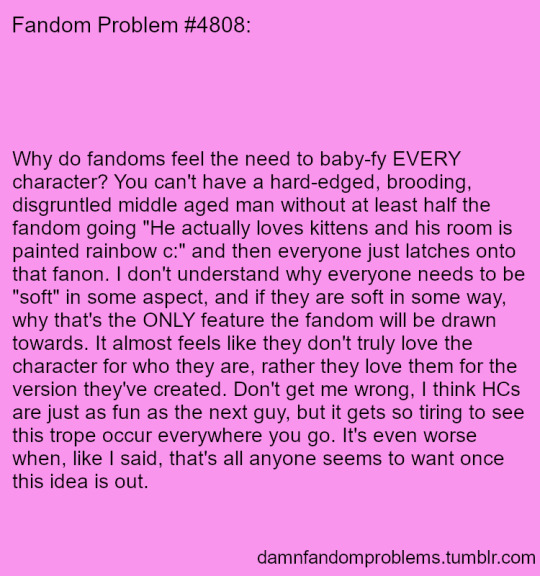
Fandom Problem 4808:
Why do fandoms feel the need to baby-fy EVERY character? You can't have a hard-edged, brooding, disgruntled middle aged man without at least half the fandom going "He actually loves kittens and his room is painted rainbow c:" and then everyone just latches onto that fanon. I don't understand why everyone needs to be "soft" in some aspect, and if they are soft in some way, why that's the ONLY feature the fandom will be drawn towards. It almost feels like they don't truly love the character for who they are, rather they love them for the version they've created. Don't get me wrong, I think HCs are just as fun as the next guy, but it gets so tiring to see this trope occur everywhere you go. It's even worse when, like I said, that's all anyone seems to want once this idea is out.
138 notes
·
View notes
Text
Holy moly- Amazing art!
@artofchinara

Lady Maria 💕
2K notes
·
View notes
Text
enough about taylor swift already. reblog and tag the smallest, least known artist you listen to
22K notes
·
View notes
Photo
Woah. Lady Maria looks like she's kneeling in the middle of a storm of blood? Neither her hair nor the feather on her head ruffle.
The red streaks are whirling around her and her red blades. Tiny, glowing dots fly around, in a much brighter red than the blood. Embers? It looks amazing.
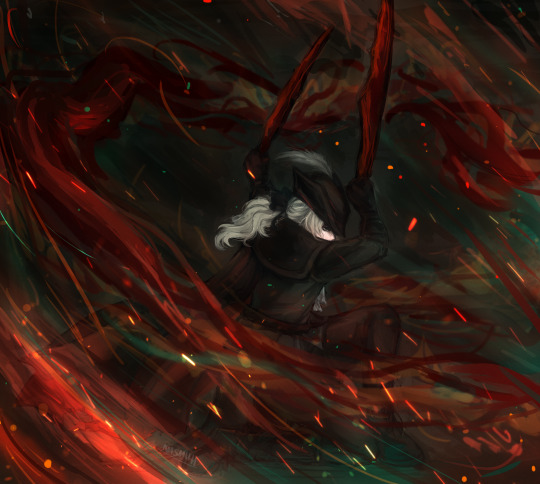

“Even if it means my murder….”
worked my ass off with this one
not perfect! but certainly proud of it
1K notes
·
View notes
Note
this might be weird to ask, but how do I critically look at another person's writing and implement what I like in their writing in my own writing? I've been having trouble improving in my writing, and frankly Im not sure how to go about doing that, even. It's easy to see what I like about another person's writing, but hard to pinpoint exactly why...
THIS IS NOT WEIRD TO ASK. It is, in fact, the most important question EVER.
How to Read Like a Writer
Re-read. If you get halfway into a chapter and think, Wow this chapter is super creepy–I wonder how they did that. Or get to the end of a book and think, I feel the poignancy of the fragility of human life in an inherently volatile economic system–I wonder how the writer made me feel that way… Go back and re-read that shit.
Read slowly. When you read like a reader, you read pretty fast. When you go in for your second, or third, or fourth re-read of a passage, chapter, or book that you want to know more about, read it slowly. Really. Slowly.
Read for technique, not content. Readers read for content (”In this paragraph, Damien gave Harold a classified envelope.”). Writers read for technique. (”In this paragraph, the writer made me feel curious about the contents of the envelope by giving sensory details about its appearance and weight.”)
Ask the right questions. They usually start with HOW: How did the writer make me feel? How did they accomplish that?
Read small. Did a chapter make you feel sad? Find out WHERE EXACTLY. What paragraph, sentence, or WORD did it for you? Was it a physical detail? A line of dialogue? A well-placed piece of punctuation? Stories are made of words and sentences. Narrow it down.
Practice. Reading like a writer is a skill that takes time to develop. Over time, you’ll get better at it!
How about y’all? Anything to add to this list? I made it off the top of my head so I’m sure I’m forgetting something. What have been your experiences with learning to read like a writer?
Hope this helps!
//////////////
The Literary Architect is a writing advice blog run by me, Bucket Siler. For more writing help, check out my Free Resource Library or get The Complete Guide to Self-Editing for Fiction Writers. xoxo
19K notes
·
View notes
Text
Year of the dragon✨
12K notes
·
View notes
Text


“Thinking about compression from a side view”
Source: Anime Private School on Twitter
1K notes
·
View notes
Text
Creating Character Arcs with the DCAST Method
Hiya! In this post, I’m going to show you how to create a story-level character arc using the DCAST method. Sound good? Super. Let’s get started.
Intro: Character arcs defined
So… what is a character arc? A character arc is the transformation, growth, or inner journey of a character over the course of a story. Character arcs are related to and tied up with plot arcs. Whereas plot arcs are about a character’s external journey (save the castle, get the girl, avoid prison); character arcs are about a character’s internal journey (fearful to courageous, shy to boisterous, miser to philanthropist).
Character-driven stories focus heavily on this internal arc, whereas plot-driven stories may only lightly touch on it, and that’s okay. Every story doesn’t need to be about a deep excavation of a character’s soul. But even plot-driven stories can benefit from incorporating character arcs.
Character arcs come in different shapes. They can be positive, negative, flat, ambiguous, bittersweet, or any combination.
Positive character arcs are the most familiar, since they are used so often in mainstream fiction and movies: Through a series of events, a character improves their situation and themselves. Examples: High Fidelity, Harry Potter, basically every mainstream book and movie
Negative character arcs are about characters who transform in an unsavory way by the end of the story. Example: Crime and Punishment
Flat arcs happen when a character encounters a series of obstacles and remains steadfast and unchanging, for better or for worse. Lolita, The Hunger Games
Ambiguous arcs are more common in literary stories. They present the reader the opportunity to interpret the arc for themselves—was it positive? Negative? Flat? Examples: The Road, We Have Always Lived in the Castle
Bittersweet arcs are similar to ambiguous arcs, except, well, they’re less ambiguous. In the end, the reader is clear what both the positive and negative aspects were, but feel that the positive outweighs the negative. Examples: The Fault in Our Stars, The Outsiders
Why character arcs are important
Good characters are essential to a good story. Imagine To Kill a Mockingbird without Scout; The Hunger Games without Katniss; Harry Potter without Harry, Ron, or Hermione; or Everything is Illuminated without Alex. This is not to minimize the importance of good plot. But a plot without good characters will fall flat.
That’s because readers don’t care about your plot by itself. They care about how your plot affects your characters. If your plot is full of crazy, exciting events but your characters are stiff, cardboard cut-outs who watch blankly from the sidelines as the story passes them by, your story will feel lopsided and unsatisfying.
That’s where character arcs come in. But, as you’ve probably figured out already, creating a character arc isn’t the easiest thing to do. I invented the DCAST method because I was frustrated and overwhelmed with all the “character development” sheets and checklists that were a mile long… but didn’t actually help me get to the heart of my character’s arc. Now, I’m able to get clear relatively quickly using the acronym DCAST to remind me of the most important character arc elements.
In this post, I’ll introduce you to the basics of creating a story-level arc for your character using the DCAST method. To apply this method to your own characters, get the companion download Creating Character Arcs: The Workbook over at my Free Resource Library.
How to plot a story-level character arc using the DCAST method
We’re going to look at giving your character an overall, story-level arc using the DCAST method. That means we’ll chart their internal development over the course of the entire story. They may have smaller arcs and changes within the story, but this top-level arc defines their overarching purpose and change (or lack thereof).
I stress this because often writers lose sight of the forest for the trees. They focus on all the smaller internal shifts their character goes through… and forget to define their character’s story-level journey. This can make for a story that lacks focus and drive.
Whew. Okay, I think we’re ready.

Keep reading
2K notes
·
View notes
Text
Gossip buddies!
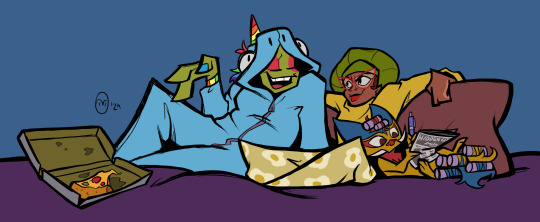
Gossip buddies!
My commissions are always open if you'd like me to draw your characters!
179 notes
·
View notes
Text
I love the composition and who you've put in this format! April between Sun and Donatello, caught between a kiss and longing and a blade. I love the jewellery like Sun's earrings and Donatello's ring. The details and colors delight me. As do the details of April's suit buttons. She also looks great in the suit in general. The colors of the different garments she's wearing complement each other and her.

Happy birthday to my friend @lastknownstatus-alive! They have some brilliant ideas, wonderful art, and are just a peach all together. Please take the time to see their art! MWAH!
44 notes
·
View notes
Text
Another amazing picture! I adore how clear your lines and the characters are with this limited palette. The lighter purple works well for Kyoko's hair. I adore that you're showing with the different shades of green => light green = represents white skin tone that she's paler than Aoi. The bright purple as well as the greens play nicely with and against each other.
It's so cute that Kyoko stops in her reading for Aoi, turning towards her. And Aoi has grasped her hand to intertwine their fingers!

day 16: aoi x kyoko

139 notes
·
View notes
Note
this might be weird to ask, but how do I critically look at another person's writing and implement what I like in their writing in my own writing? I've been having trouble improving in my writing, and frankly Im not sure how to go about doing that, even. It's easy to see what I like about another person's writing, but hard to pinpoint exactly why...
THIS IS NOT WEIRD TO ASK. It is, in fact, the most important question EVER.
How to Read Like a Writer
Re-read. If you get halfway into a chapter and think, Wow this chapter is super creepy–I wonder how they did that. Or get to the end of a book and think, I feel the poignancy of the fragility of human life in an inherently volatile economic system–I wonder how the writer made me feel that way… Go back and re-read that shit.
Read slowly. When you read like a reader, you read pretty fast. When you go in for your second, or third, or fourth re-read of a passage, chapter, or book that you want to know more about, read it slowly. Really. Slowly.
Read for technique, not content. Readers read for content (”In this paragraph, Damien gave Harold a classified envelope.”). Writers read for technique. (”In this paragraph, the writer made me feel curious about the contents of the envelope by giving sensory details about its appearance and weight.”)
Ask the right questions. They usually start with HOW: How did the writer make me feel? How did they accomplish that?
Read small. Did a chapter make you feel sad? Find out WHERE EXACTLY. What paragraph, sentence, or WORD did it for you? Was it a physical detail? A line of dialogue? A well-placed piece of punctuation? Stories are made of words and sentences. Narrow it down.
Practice. Reading like a writer is a skill that takes time to develop. Over time, you’ll get better at it!
How about y’all? Anything to add to this list? I made it off the top of my head so I’m sure I’m forgetting something. What have been your experiences with learning to read like a writer?
Hope this helps!
//////////////
The Literary Architect is a writing advice blog run by me, Bucket Siler. For more writing help, check out my Free Resource Library or get The Complete Guide to Self-Editing for Fiction Writers. xoxo
19K notes
·
View notes
Note
this might be weird to ask, but how do I critically look at another person's writing and implement what I like in their writing in my own writing? I've been having trouble improving in my writing, and frankly Im not sure how to go about doing that, even. It's easy to see what I like about another person's writing, but hard to pinpoint exactly why...
THIS IS NOT WEIRD TO ASK. It is, in fact, the most important question EVER.
How to Read Like a Writer
Re-read. If you get halfway into a chapter and think, Wow this chapter is super creepy–I wonder how they did that. Or get to the end of a book and think, I feel the poignancy of the fragility of human life in an inherently volatile economic system–I wonder how the writer made me feel that way… Go back and re-read that shit.
Read slowly. When you read like a reader, you read pretty fast. When you go in for your second, or third, or fourth re-read of a passage, chapter, or book that you want to know more about, read it slowly. Really. Slowly.
Read for technique, not content. Readers read for content (”In this paragraph, Damien gave Harold a classified envelope.”). Writers read for technique. (”In this paragraph, the writer made me feel curious about the contents of the envelope by giving sensory details about its appearance and weight.”)
Ask the right questions. They usually start with HOW: How did the writer make me feel? How did they accomplish that?
Read small. Did a chapter make you feel sad? Find out WHERE EXACTLY. What paragraph, sentence, or WORD did it for you? Was it a physical detail? A line of dialogue? A well-placed piece of punctuation? Stories are made of words and sentences. Narrow it down.
Practice. Reading like a writer is a skill that takes time to develop. Over time, you’ll get better at it!
How about y’all? Anything to add to this list? I made it off the top of my head so I’m sure I’m forgetting something. What have been your experiences with learning to read like a writer?
Hope this helps!
//////////////
The Literary Architect is a writing advice blog run by me, Bucket Siler. For more writing help, check out my Free Resource Library or get The Complete Guide to Self-Editing for Fiction Writers. xoxo
19K notes
·
View notes